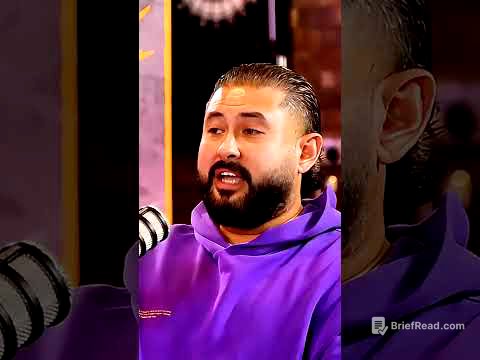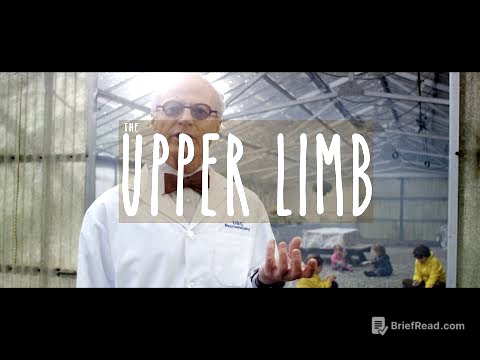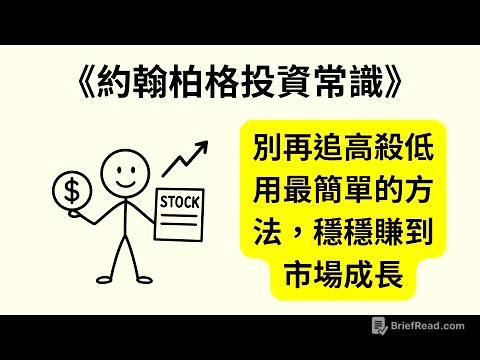TLDR;
Kurtis Conner discusses his long-standing relationship with YouTube and expresses his frustration with the trend of faceless YouTube channels, which promise easy money through low-effort, AI-generated content. He critiques the gurus who promote these channels and sell courses, often contradicting their own advice. To prove his point, Kurtis creates his own faceless YouTube channel, documenting the process and expenses, and ultimately concludes that the venture is not as lucrative or fulfilling as advertised. He emphasizes the importance of genuine creativity and artistic expression over automated content creation.
- Kurtis shares his personal history with YouTube, highlighting its impact on his life and career.
- He criticizes the get-rich-quick schemes associated with faceless YouTube channels and the gurus who promote them.
- Kurtis conducts an experiment by creating his own faceless YouTube channel, documenting the process and expenses.
- He concludes that making money on YouTube is not easy and emphasizes the importance of genuine creativity and artistic expression.
my relationship with youtube [0:00]
Kurtis reflects on his extensive history with YouTube, both as a viewer and a creator. He recalls watching his first YouTube video in 2005 and how it sparked his interest in the platform. He describes how YouTube's personal, honest, and rebellious nature set it apart from traditional media like TV and movies. Kurtis expresses his deep appreciation for YouTube as an art form, emphasizing its potential for creative expression and career opportunities.
what is a "faceless youtube channel"? [2:36]
Kurtis introduces the topic of faceless YouTube channels, clarifying that he is not referring to YouTubers who simply choose not to show their faces, but rather to channels that rely on low-effort, automated content. He expresses his frustration with the trend of people bragging about the money they make from these channels, which he views as a "fishy" get-rich-quick scheme. He shows an example of a video with 4.1 million views that generated $52,750 in ad revenue, highlighting the allure of this seemingly easy money-making method.
the $52k youtube video [3:52]
Kurtis examines a specific faceless YouTube video about Elon Musk's supposed $10,000 house. He notes that the video uses AI-generated content, including the script and voiceover. He points out inaccuracies in the video, such as the actual cost of the house being $60,000 and Elon Musk not living in one of these homes. Kurtis concludes that the video is essentially an hour of stock footage with an untrue script generated by AI, yet it made $52,000 for minimal effort.
faceless youtube final boss [7:36]
Kurtis introduces Devin Canup, whom he calls the "head honcho" of the faceless YouTube channel trend. Devin claims to have made seven figures with his channels and runs The Faceless Channel Academy. Kurtis is skeptical of Devin's claims and criticizes the fact that he sells an online course despite supposedly making millions from his channels. He also points out contradictions in Devin's advertising, such as claiming that making money is not easy while also tweeting that $30,000 a month can be simple.
the new "side hustle" [16:50]
Kurtis discusses how faceless YouTube channels have become a popular side hustle, often advertised as a rapid and easy way to make money. He expresses concern that this trend encourages the creation of low-quality content using AI tools, with the hope that one video will go viral. He contrasts this approach with the idea of spending time creating one good video, which he believes is more rewarding. Kurtis also criticizes the flaunting of wealth and success by faceless YouTube gurus, which he sees as a way to entice people to buy their courses.
the plan [21:25]
Kurtis announces that he will start his own faceless YouTube channel to test whether the claims of easy money are true. He emphasizes that he will do it as ethically as possible, avoiding copying other people's content and using AI-generated art trained on stolen artwork. He will only use ChatGPT for scripting and will offset the CO2 emissions by donating to a tree-planting charity. Kurtis plans to track all his expenses for the channel.
making the channel [24:38]
Kurtis begins creating his faceless YouTube channel, deciding to focus on the real estate niche due to its high ad revenue potential. He brainstorms names for the channel, eventually settling on "Luscious Listings." He designs a logo and creates a channel bio, aiming to attract viewers interested in high-end, luxurious homes. He plans to upload daily videos for a week to test the channel's performance.
the scripts [30:36]
Kurtis discusses his approach to scripting the videos, deciding to outsource one video script to a writer on Fiverr and use ChatGPT for the remaining scripts. He orders a rush delivery for the outsourced script, incurring a significant expense. For the ChatGPT scripts, he calculates the CO2 emissions and donates to a tree-planting charity to offset the environmental impact. He then uses a free text-to-speech website to create voiceovers for the ChatGPT scripts.
editing [33:52]
Kurtis begins editing the videos, noting that it is a tedious process involving downloading stock footage and adding text. He finds the editing process boring and unfulfilling, as he is not passionate about real estate. He adds humorous elements to the videos to keep himself entertained.
final touches [36:37]
Kurtis adds captions and an ember effect to the videos, following the example of other faceless YouTube channels. He schedules the videos to upload daily for a week, starting on Monday, October 21st. He reflects on the amount of time he has spent on the project, questioning whether it is a realistic side hustle for people with full-time jobs.
monday [38:20]
Kurtis uploads the first video, titled "Coolest Basement Ever," but it only receives one view after seven days. He expresses disappointment but remains hopeful for the rest of the week. He receives the script for his outsourced video, which he finds amusing.
tuesday [40:04]
Kurtis uploads the second video, titled "Most Interesting Houses in the World," which performs significantly better, receiving 31 views. He is encouraged by this small success and calculates how far he is from meeting the requirements for YouTube monetization. He also receives the voiceover for his outsourced video, which he finds excellent.
wednesday [42:15]
Kurtis uploads the third video, titled "Most Beautiful Apartments in the World," while in New York City. He reflects on the talented artists he sees in Central Park and questions why they are not simply using computers to create content and make money. The video receives 273 views, a significant increase from the previous videos.
thursday [45:28]
Kurtis uploads the fourth video, titled "Most Ridiculous Houses You'll Ever See," but it only receives one view. He speculates that the title may be too intimidating. He also encounters problems with his outsourced video, as the editor's stock footage subscription has expired. He finds a new editor and pays extra for a rush order.
friday [47:55]
Kurtis uploads the fifth video, titled "Most Unexpected House Interiors," which receives three views. He expresses disappointment and frustration with the lack of success.
saturday [49:06]
Kurtis uploads the sixth video, titled "How to Buy Your First Home (Realistic)," which receives seven views. He receives the edited version of his outsourced video, which he finds excellent. He hires someone to create a thumbnail for the video but discovers that it was made with AI.
the final day [50:46]
Kurtis uploads his fully outsourced video, hoping it will be a success. However, it only receives 15 views. He is disappointed and frustrated with the overall results of his experiment.
conclusion [51:34]
Kurtis reviews the final analytics for his faceless YouTube channel, which are dismal. He concludes that making money on YouTube is not easy and requires a lot of time and work. He emphasizes the importance of making videos for the sake of making videos and expressing oneself creatively. He criticizes the idea of hacking the algorithm and creating content solely to make money. Kurtis provides a breakdown of his expenses for the experiment, which totaled $1,434. He concludes that the faceless YouTube channel trend is a flawed and unethical way to create content. He encourages viewers to avoid buying courses from gurus and to focus on creating art in a fun, artistic, and creatively fulfilling way.









